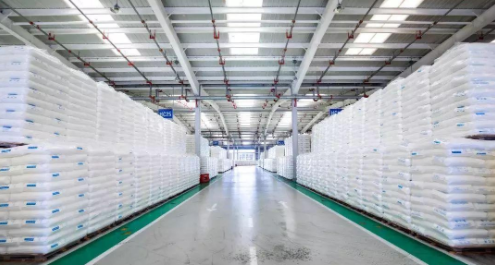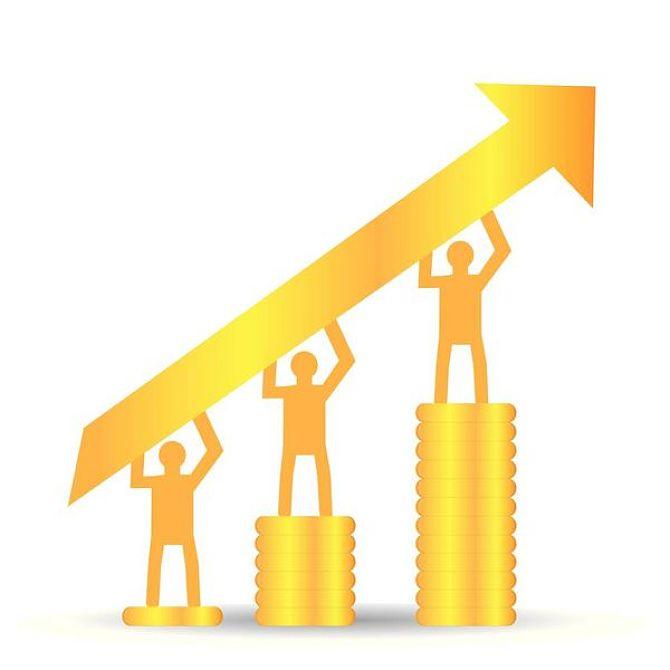Affected by high costs, weak demand and other factors, the performance of listed companies in the polypropylene (PP) industry in the first three quarters of this year was not optimistic.
Among them, Donghua Energy (002221. SZ), which is determined to be the largest producer of new polypropylene materials in China, had an operating income of 22.09 billion yuan in the first three quarters, up 2.58% year on year; The net profit attributable to shareholders of the listed company was 159 million yuan, a year-on-year decrease of 84.48%. In addition, Shanghai Petrochemical (600688. SH) realized a net profit loss attributable to the parent company of 2.003 billion yuan in the first three quarters, which was transferred from profit to loss on a year-on-year basis; Maohua Shihua (000637. SZ) realized a net profit attributable to the parent company of 4.6464 million yuan, a year-on-year decrease of 86.79%.
As for the reasons for the decline in net profit, Donghua Energy said that due to the geopolitical instability, the price of raw materials continued to run at a high level, resulting in a significant increase in production costs. At the same time, the demand side was affected by the downward pressure of the global economy and the COVID-19, and the profitability declined periodically.
Profit inversion
Polypropylene is the second largest general-purpose synthetic resin, accounting for about 30% of the total consumption of synthetic resin. It is considered to be the most promising variety among the five major synthetic resins. Polypropylene industry covers a wide range of areas, such as automobiles, household appliances, electronics, packaging, building materials and furniture.
At present, the production capacity of oil based polypropylene accounts for about 60% of the total production capacity of polypropylene. The fluctuation of crude oil price has a great impact on the cost of polypropylene and the market mentality. Since 2022, international oil prices have risen to a new high in recent years due to multiple factors.
In the first three quarters of this year, due to high costs and market downturn, the profitability of PP enterprises was under pressure.
On October 29, Donghua Energy released its report for the third quarter of 2022, saying that the company’s operating income in the first three quarters was 22.009 billion yuan, with a year-on-year growth of 2.58%; The net profit attributable to shareholders of the listed company was 159 million yuan, a year-on-year decrease of 84.48%. In addition, on October 27, the third quarter report of 2022 released by Maohua Shihua showed that the company achieved an operating income of 5.133 billion yuan in the first three quarters, a year-on-year increase of 38.73%; The net profit attributable to the parent company was 4.6464 million yuan, a year-on-year decrease of 86.79%. In the first three quarters of this year, Sinopec Shanghai achieved an operating income of 57.779 billion yuan, a year-on-year decrease of 6.60%. The net profit attributable to shareholders of the listed company was 2.003 billion yuan, which was converted from profit to loss on a year-on-year basis.
Among them, Donghua Energy said that in the first three quarters of this year, the company’s net profit decreased by 842 million yuan, or 82.33%, compared with the same period last year, mainly because: on the one hand, affected by the COVID-19, the operating rate of downstream factories was insufficient, and terminal demand fell; On the other hand, affected by the situation in Ukraine, the price of raw materials rose.
Increased competition
At present, Donghua Energy has achieved propylene production capacity of 1.8 million tons/year and polypropylene production capacity of nearly 2 million tons/year; It is planned to add another 4 million tons of polypropylene capacity in Maoming and other places in the next five years.
Sun Chengcheng, from Longzhong Information, said that from the perspective of polypropylene capacity expansion, the capacity expansion of refining chemical integration projects will accelerate after 2019. Due to the large capacity of refining chemical integration projects, complete industrial chain products, faster market influence and wider coverage, the supply pattern changes brought about by the expansion will have a more obvious impact on the domestic traditional supply market, and the market competition will continue to intensify, The domestic polypropylene industry will enter the stage of great integration of survival of the fittest.
It is worth noting that 2022 is still a big year for the expansion of polypropylene production. Many giants have entered the polypropylene industry, or increased investment on the basis of the original industry. Although the growth rate has slowed down under the influence of the “dual carbon” policy, it can be predicted that the actual implementation of the project is still being fulfilled.
Shanghai Petrochemical said that the risk of global economic stagflation rose in the second half of the year, and China’s economic growth is expected to recover and remain within a reasonable range. With the recovery of demand, steady growth and other policies, the demand for automobiles, real estate, household appliances and other fields is expected to increase. It is expected that the domestic demand for refined oil and chemical products will recover, the price transmission of petrochemical industry chain will be smooth, and the overall trend of the industry will be good. But at the same time, due to the increased uncertainty of the international oil price trend and the centralized release of domestic refining and chemical capacity, the company’s benefit pressure will further increase.
Sun Chengcheng believes that in the second half of the year, the pace of enterprise capacity expansion has been accelerated. It is expected that the new capacity will be about 4.7 million tons, and the production capacity is expected to increase significantly year on year. By the end of the year, the total production capacity of polypropylene will exceed 40 million tons. From the point of production nodes, new capacity will be intensively released in the fourth quarter, and the rapid growth of capacity or the risk of excess will lead to more intense market competition.
Under this background, how should polypropylene enterprises develop? Sun Chengcheng suggested that, first, accelerating the development of new products, implementing the differentiation strategy, and developing special materials with high added value to replace imports are the only way to avoid price competition in the Red Sea. The second is to optimize the customer structure. For suppliers, it is necessary to gradually optimize the customer structure, expand the proportion of direct sales, ensure the stability of sales channels, and vigorously develop terminal factory customers, especially customers with industry representation or industry development direction. This not only requires suppliers to have high-quality products, but also needs to tailor marketing plans and supporting corresponding marketing policies according to customer characteristics. Third, enterprises should do a good job in the development of export channels, choose multiple outlets, reduce mutual gambling, and avoid intensifying low price competition. Fourth, we should always maintain a high sensitivity to consumer demand. Especially since the outbreak of COVID-19, demand changes have brought about many changes in consumer behavior in the market. The production enterprises and sales teams should always maintain a sensitivity to demand changes, follow the pace of the market and actively develop products.
Imbalance between supply and demand
However, contrary to the current situation of the industry, the investment enthusiasm of industrial capital for polypropylene projects remains unchanged.
At present, Donghua Energy has achieved propylene production capacity of 1.8 million tons/year and polypropylene production capacity of nearly 2 million tons/year; It is planned to add another 4 million tons of polypropylene capacity in Maoming and other places in the next five years. Among them, 600,000 t/a PDH, 400,000 t/a PP, 200,000 t/a synthetic ammonia and supporting facilities are under construction in Maoming Base, which is expected to be completed and put into operation by the end of 2022; The second set of 600000 t/a PDH and two sets of 400000 t/a PP energy assessment and environmental assessment indicators have been obtained.
According to Jin Lianchuang’s statistics, from 2018 to 2022, China’s polypropylene production capacity showed a continuous growth trend, with a growth rate of 3.03% to 16.78% in recent five years, and an average annual growth rate of 10.27%. The growth rate in 2018 was 3.03%, the lowest in the last five years. The highest year is 2020, with a growth rate of 16.78%. The new capacity in that year is 4 million tons, and the growth rate in other years is more than 10%. As of October 2022, the total capacity of polypropylene in China will reach 34.87 million tons, and the new capacity of polypropylene in China will be 2.8 million tons in the year. There is still new capacity expected to be put into production at the end of the year.
Sinopec Shanghai said that in the second half of the year, the risk of global economic stagflation rose, and the domestic economic growth was expected to recover and remain within a reasonable range. With the recovery of demand, steady growth and other policies, the demand for automobiles, real estate, household appliances and other fields is expected to increase. It is expected that the domestic demand for refined oil and chemical products will recover, the price transmission of petrochemical industry chain will be smooth, and the overall trend of the industry will be good. But at the same time, due to the increased uncertainty of the international oil price trend and the centralized release of domestic refining and chemical capacity, the company’s benefit pressure will further increase.
Teng Meixia believes that in 2023, the polypropylene market will enter a new round of capacity expansion, and the market supply is expected to increase significantly; At the same time, domestic demand has shown a trend of sluggish growth due to various factors. At the same time, the global COVID-19 epidemic is repeated, and demand is expected to further weaken. Against this backdrop, the polypropylene market will gradually enter a situation of supply and demand imbalance, and the approximate rate of polypropylene prices will generally decline in 2023.
According to Teng Meixia’s prediction, after the 2023 Spring Festival, the market will enter the low demand season, and the PP market may continue to decline throughout the year. From March to May, some enterprises planned to repair or boost the market mentality, and the market may occasionally rise. From June to July, the demand was relatively weak and the price was mainly lower. Since the middle and late August, the PP market has gradually warmed up. The following “golden nine and silver ten” will bring about the prosperity of demand in the second half of the year, maintaining a high point. It is expected that the second peak in the year will remain in September to October. From November to December, with the advent of the E-commerce Festival, a wave of demand may be driven to cover positions, but the market will be difficult to rise and easy to fall in the rest of the time if there is no macro positive news to boost.
JinDun Chemical is committed to the development and application of special acrylate monomers and special fine chemicals containing fluorine.JinDun Chemical has OEM processing plants in Jiangsu, Anhui and other places that have cooperated for decades, providing more solid backing for customized production services of special chemicals.JinDun Chemical insists on creating a team with dreams, making products with dignity, meticulous, rigorous, and go all out to be a trusted partner and friend of customers! Try to make new chemical materials bring a better future to the world
Post time: Dec-01-2022



